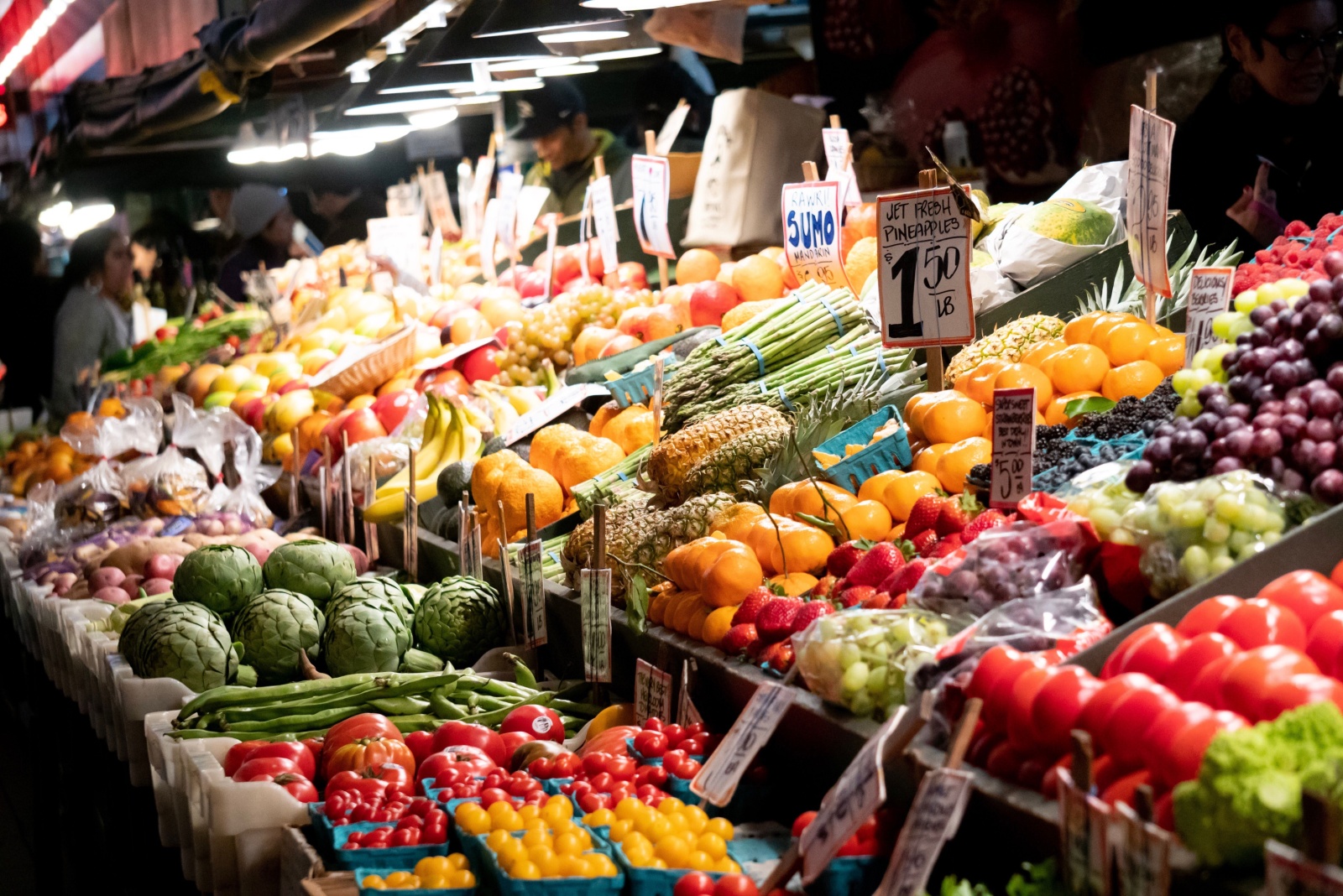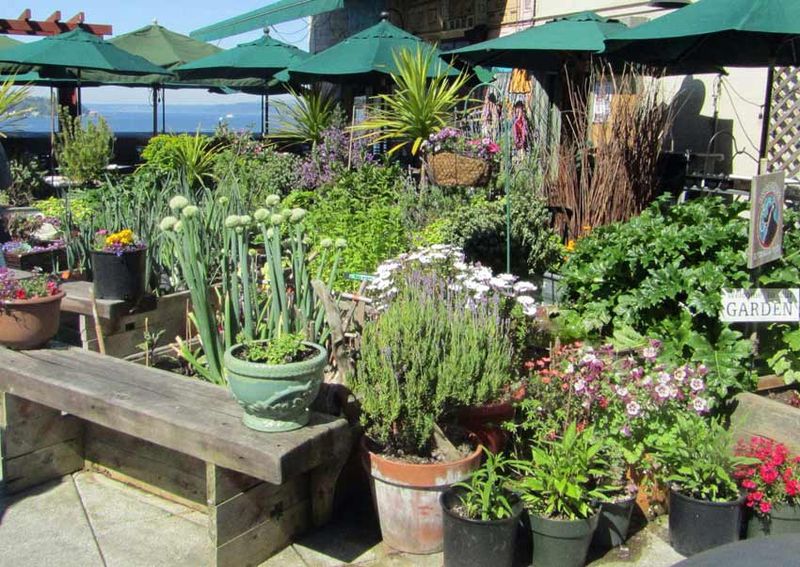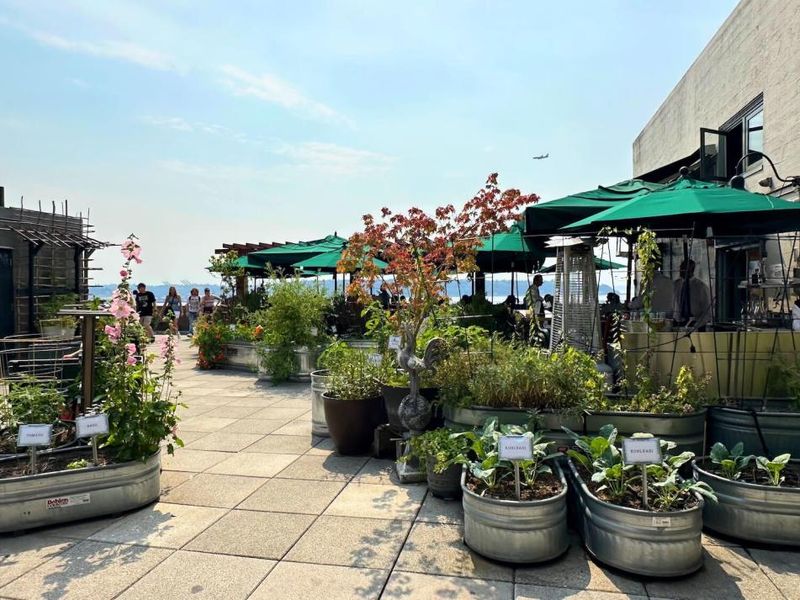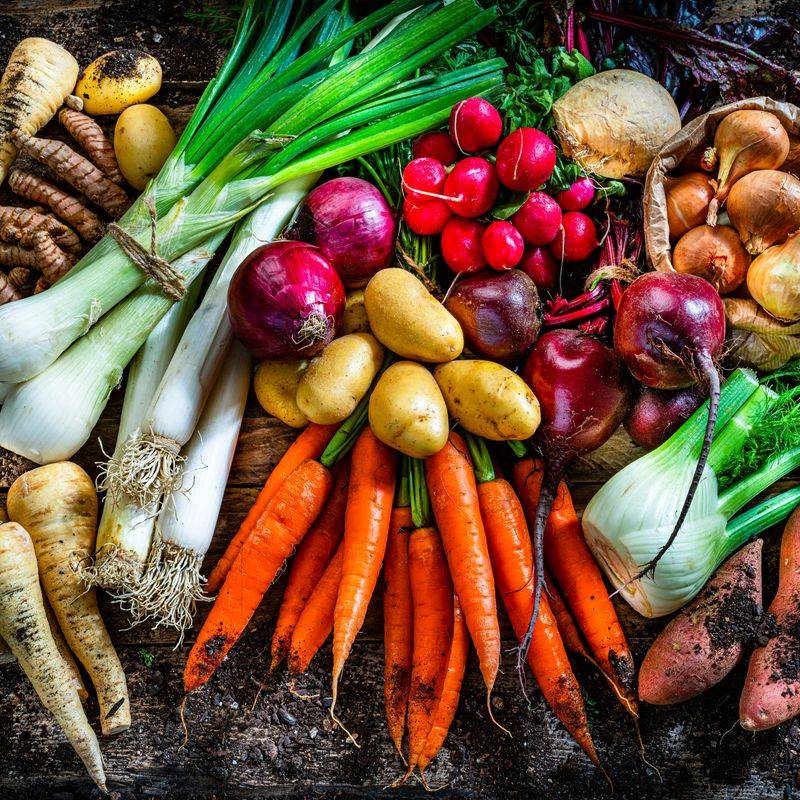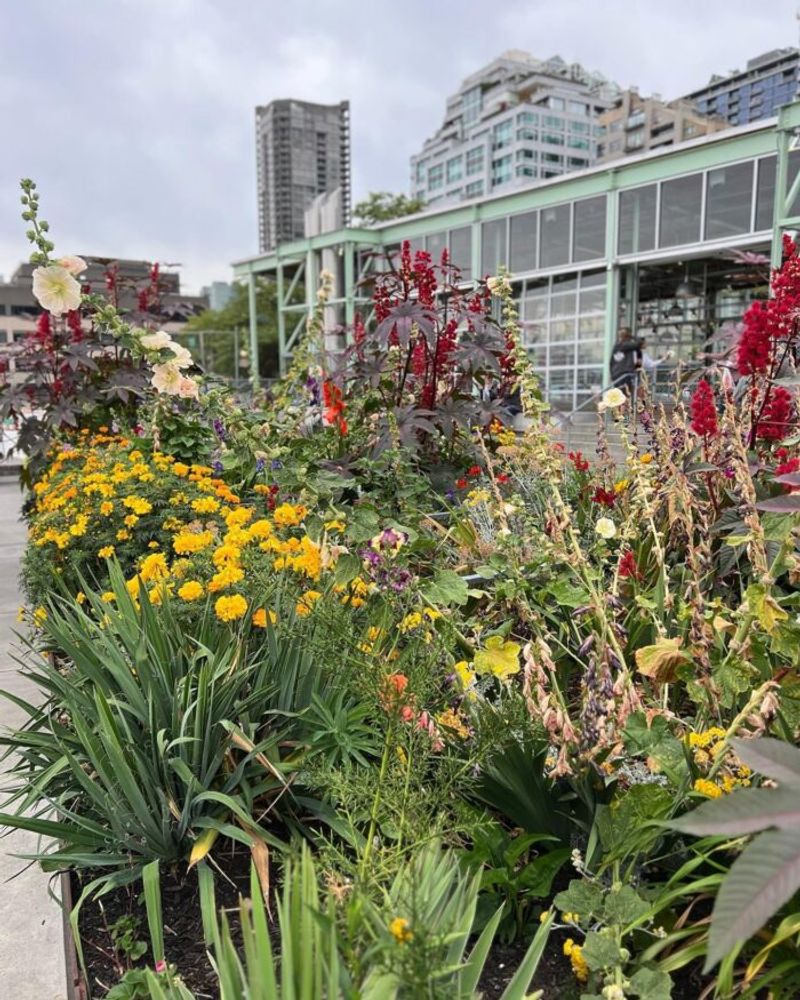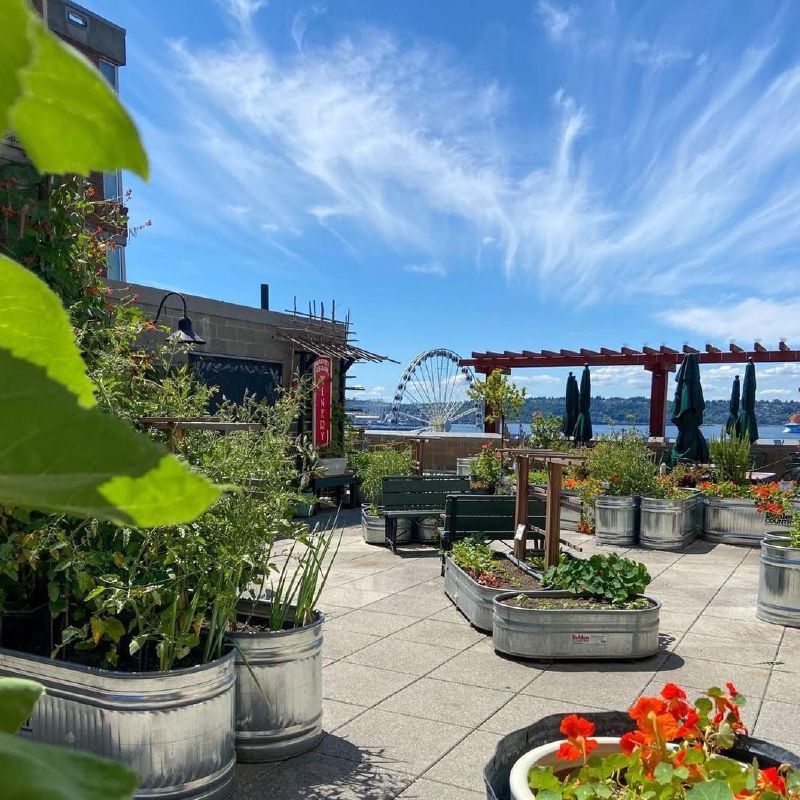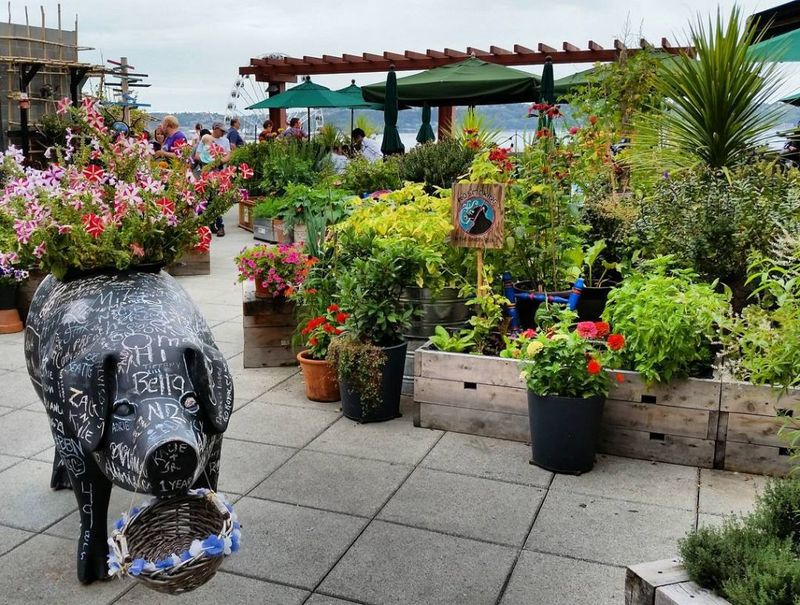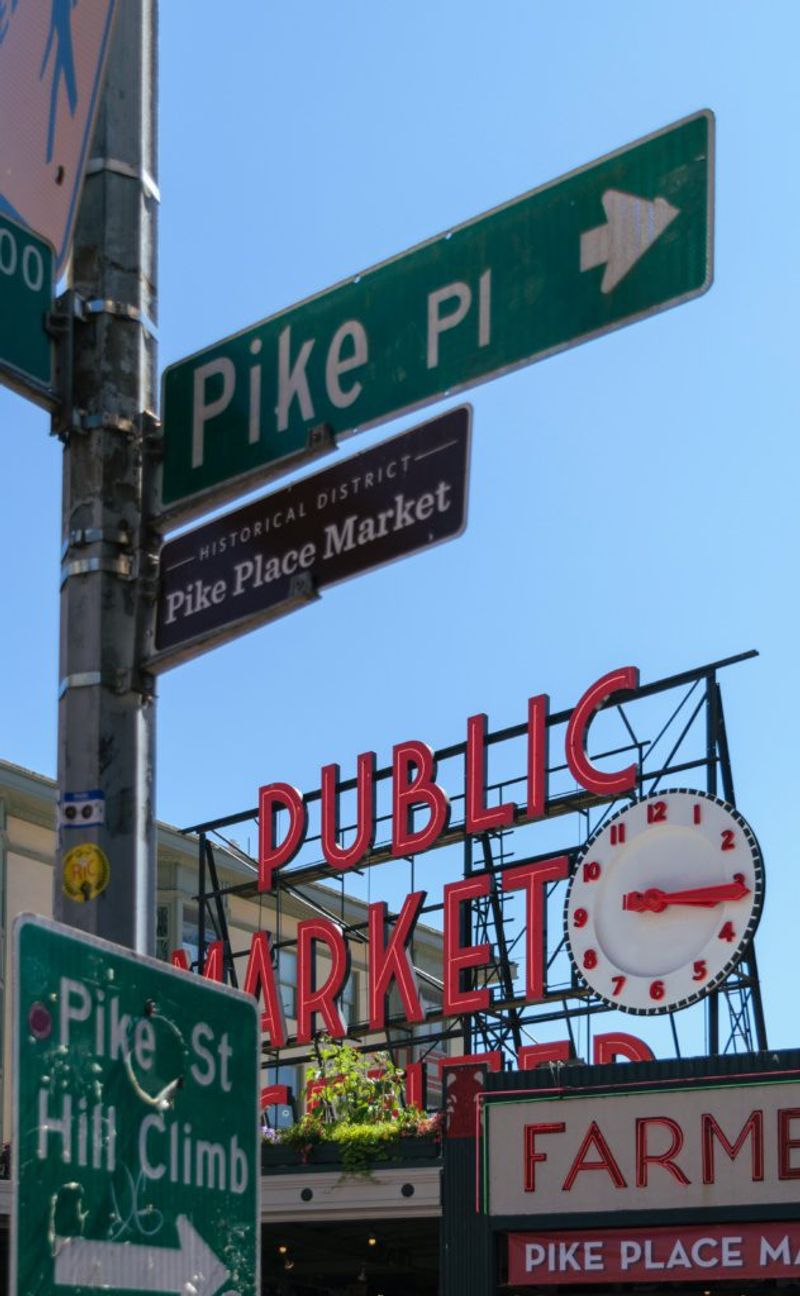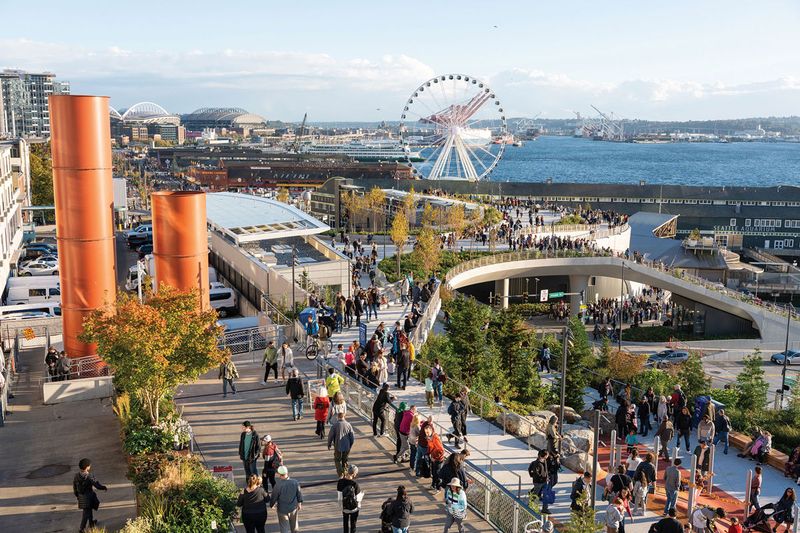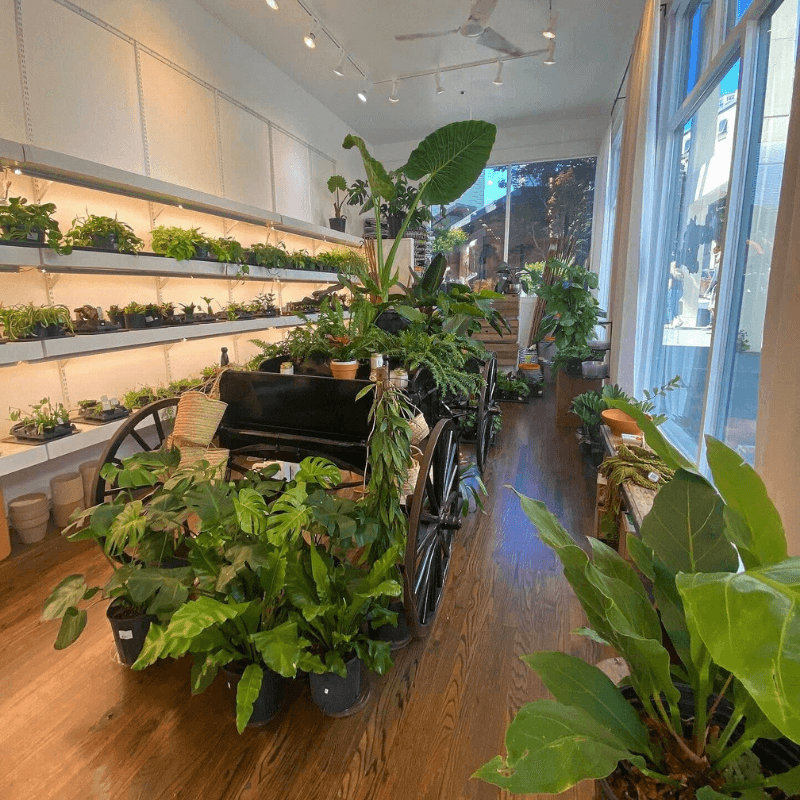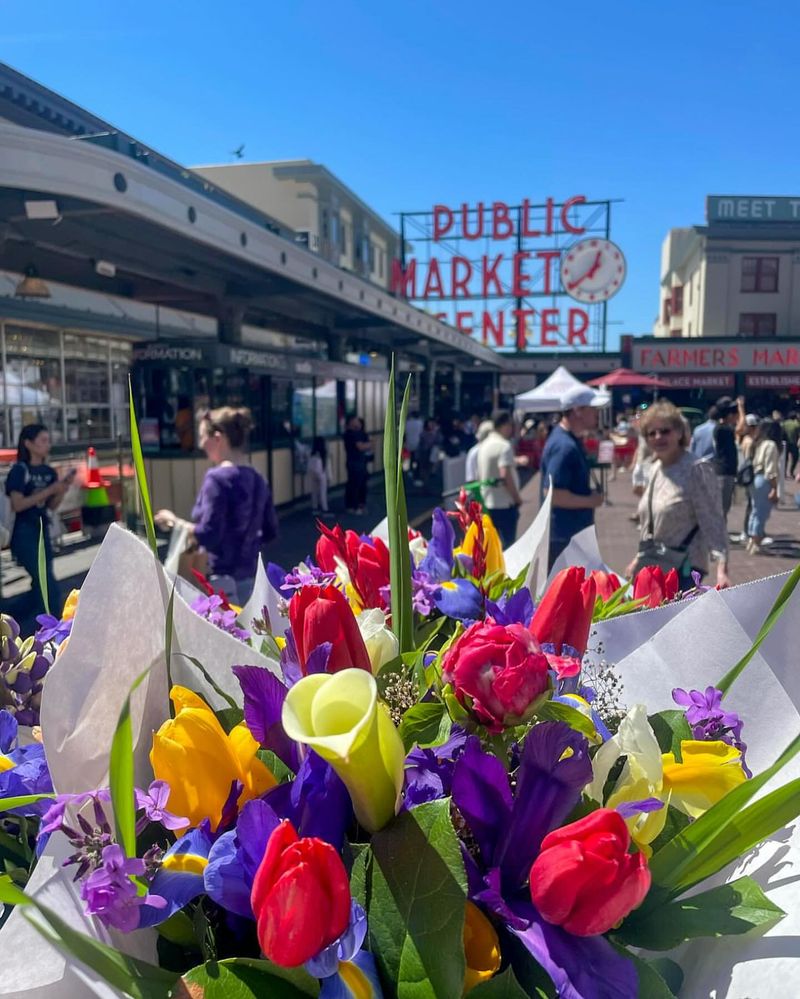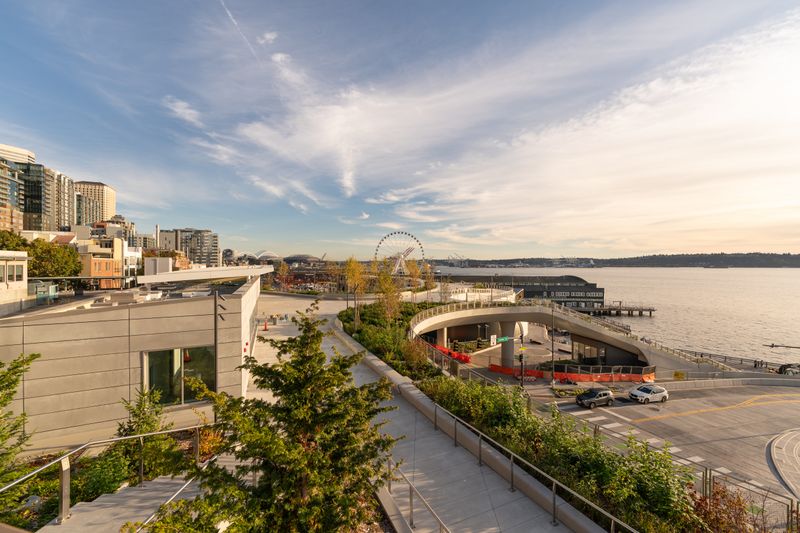Seattle’s Pike Place Market is known worldwide for flying fish and handmade crafts, but there’s a hidden green side many visitors miss. The market’s gardens and plant displays offer peaceful retreats from the bustling crowds.
When I visited last month, I was surprised by how many gardening spots were tucked between food stalls and artisan shops. These green spaces tell their own story about Seattle’s connection to nature.
From rooftop herbs to vertical gardens, here are twelve garden treasures worth seeking out during your next trip to this famous market.
1. Rooftop Herb Plantings Above The Market
Many visitors never look up to discover the thriving herb gardens atop Pike Place buildings. These elevated gardens supply fresh herbs to market restaurants and vendors below.
The scent of rosemary and basil wafts down on sunny days. I spotted chefs from nearby restaurants selecting sprigs of thyme and mint for their daily specials.
Free guided tours run every Tuesday morning, taking curious visitors behind the scenes to explore these working herb gardens that have been operating since 2013.
2. Seasonal Flower Beds Along Hidden Walkways
Secret pathways throughout Pike Place Market feature rotating seasonal blooms that change with Seattle’s weather patterns. Local gardeners carefully select varieties that thrive in the Pacific Northwest climate.
During spring, tulips and daffodils create colorful carpets alongside less-traveled corridors. Summer brings lavender and dahlias, while fall showcases chrysanthemums and ornamental kale.
Maps available at the market information booth mark these hidden floral pathways that provide peaceful respite from the main thoroughfares.
3. Edible Garden Corners With Market Flavors
Scattered throughout Pike Place are demonstration plots showcasing edible plants native to Washington state. These mini-gardens highlight the agricultural heritage behind many market offerings.
Signage explains how these same varieties end up in vendor stalls. My favorite spot featured heirloom tomatoes and unusual berries that I’d never seen before visiting Seattle.
Market gardeners host impromptu tastings where visitors sample fresh-picked produce. These educational corners connect shoppers directly to the source of their food.
4. Pollinator-Friendly Plantings For Urban Bees
The market’s bee-friendly gardens serve a crucial role in supporting Seattle’s urban honey production. Carefully selected flowers attract native pollinators throughout the growing season.
Observation areas let visitors safely watch bees at work among the blossoms. Several honey vendors at Pike Place source directly from hives that benefit from these plantings.
Educational panels explain how city pollinator habitats help combat bee population decline. The market’s honeybee initiative has inspired similar projects across downtown Seattle since it began in 2009.
5. Native Plants That Tell Seattle’s Story
Indigenous plant collections throughout Pike Place showcase species that shaped the Pacific Northwest’s natural history. Salal, sword ferns, and Oregon grape create living displays of Seattle’s pre-urban landscape.
Collaboration with local tribes ensures these gardens respectfully represent cultural plant knowledge. Signs in both English and Coast Salish languages identify plants and their traditional uses.
The market’s native plant areas serve as living museums of regional ecology. School groups often gather here for educational programs about Washington’s botanical heritage.
6. Quiet Garden Seating Spots Amid The Crowds
Hidden pocket gardens offer peaceful retreats where market-goers can rest surrounded by greenery. These thoughtfully designed spaces feature comfortable benches nestled among shade-loving plants.
Morning is the best time to enjoy these tranquil corners before crowds arrive. I discovered one secluded garden with a small fountain where locals read books while sipping coffee from nearby stands.
Each seating area has its own distinct character and plant selection. Market maps now highlight these green sanctuaries that provide welcome respite from Pike Place’s energetic atmosphere.
7. Community Planters Maintained By Locals
Neighborhood volunteers tend dozens of colorful planters throughout Pike Place Market. These container gardens showcase creative combinations of flowers, herbs, and decorative plants that thrive in urban settings.
Each planter bears a small plaque recognizing its caretaker – often longtime Seattle residents or nearby businesses. The volunteer gardening program started as a grassroots effort in 1997 and has grown to include over 50 participants.
Weekly maintenance sessions welcome visitors to join in light gardening tasks. This community initiative has strengthened connections between market vendors and neighborhood residents.
8. Market Green Walls That Surprise Visitors
Vertical gardens climb several walls throughout Pike Place, turning ordinary building sides into living tapestries. These architectural features incorporate irrigation systems that maintain lush plant growth year-round.
Some green walls include edible components harvested by market restaurants. The largest installation covers three stories and contains over 200 plant varieties adapted to Seattle’s climate.
Special viewing platforms allow visitors to observe these vertical ecosystems up close. The market’s green wall program has become a model for urban greening projects across the Pacific Northwest.
9. Shade Trees Framing Market Entrances
Mature trees create natural gateways at Pike Place entrances, offering shade and defining the market’s boundaries. These carefully preserved specimens include several rare varieties not commonly found in Seattle’s urban landscape.
Seasonal changes transform these living landmarks throughout the year. Fall brings spectacular color to the Japanese maples near the main entrance, drawing photographers and artists.
Tree preservation efforts have saved several historic specimens during market renovations. Arborists conduct regular care to ensure these botanical sentinels continue welcoming visitors for generations to come.
10. Educational Signs Highlighting Local Flora
Informative botanical displays throughout Pike Place Market teach visitors about Seattle’s plant heritage. QR codes on these signs link to expanded information about native species and sustainable gardening practices.
Children particularly enjoy the interactive elements incorporated into these educational stations. My nephew spent half an hour following the “pollinator pathway” hunt that connects different plant exhibits.
The signage program resulted from collaboration between market management and local environmental educators. Updates occur seasonally to reflect what’s currently growing and blooming in the market’s gardens.
11. Small Garden Installations Tucked Between Vendors
Miniature garden displays nestle between vendor stalls, creating unexpected moments of greenery within Pike Place’s commercial spaces. These artistic installations often incorporate repurposed market items as creative planters.
Local garden designers rotate these displays quarterly to showcase seasonal themes. Winter arrangements feature evergreens and berries, while summer brings cascading flowers and edible displays.
Vendors take pride in maintaining the plantings adjacent to their stalls. This program has beautified narrow corridors and previously overlooked corners throughout the historic market complex.
12. Future Green Expansions Planned For The Market
Construction signs around Pike Place reveal ambitious plans to increase green space by 30% over the next five years. Architectural renderings show rooftop gardens, expanded plant collections, and new public growing areas.
Community input has shaped these upcoming projects through public workshops and surveys. The expansion will create Seattle’s first public food forest within a major market setting.
Fundraising efforts have already secured grants for educational components of the new gardens. These green additions aim to balance historic preservation with environmental innovation at this beloved Seattle landmark.

